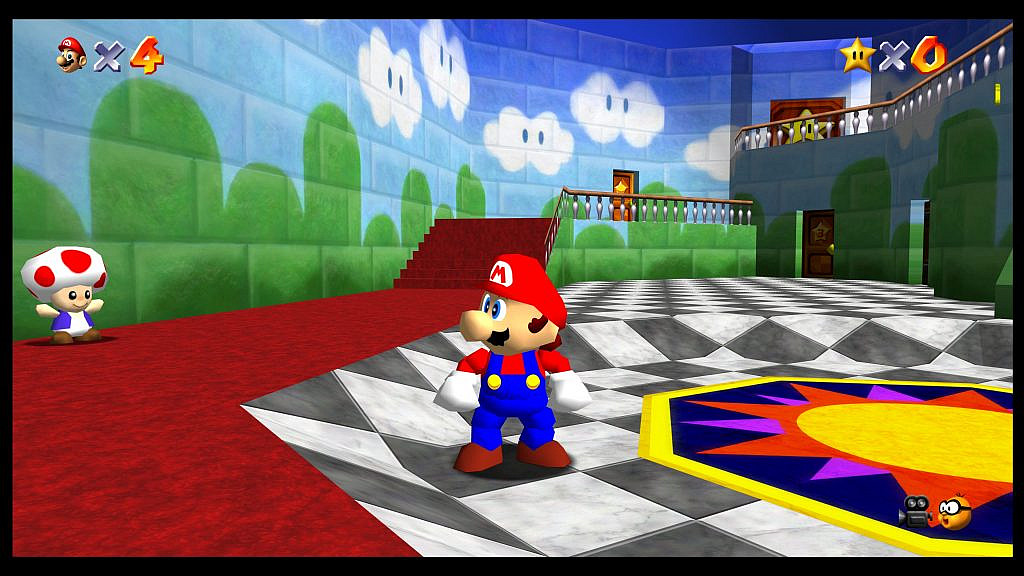The research article When Seeing is Playing: The History of the Videogame Camera, written by Selim Krichane, examines the discourse researchers have used when analyzing how videogames have visualized their worlds throughout history. Krichane suggests that the term “camera” can have different meanings and that, normally, when we refer to the “camera” when discussing video games, what we really mean is not an actual, physical camera in the sense of a film camera, say, but rather the term “camera” is used as a label to make sense of the gaming experience.
Krichane outlines the somewhat vague point in history – early-to-mid 1990s – when the emerging 3D graphics first brought to the foreground the notion of “camera” in videogames with titles ranging from Alone in the Dark to Super Mario 64. Using the advent of 3D graphics as the starting point, he distinguishes between the idea of the “virtual camera” and the “diegetic camera”; the virtual camera is a two-dimensional viewing surface devoid of the typical functions associated with cameras, such as recording, whereas the diegetic camera is more akin to what is considered a cinematic framework. He argues that there has been a change since the early stages of the discourse in the 1980s when both concepts were considered, with the focus in contemporary research having moved away from the semantic field of the cinema to the naturalization of the virtual camera as the characteristic videogame camera since the mid-1990s.
Krichane uses a vast array of game examples from the late 1980s to the early 1990s to show how many early games introduced the idea of a “camera” into gaming. Flying simulations, dogfighting games and various driving and sports games made the presence of the camera explicit. Sports simulations, in particular, made good use of camera angles one would see in a real game on television. Some of the game manuals themselves even boasted about how many different camera angles are available and how the player could change the angle, effectively becoming the director or the editor themself.
This initial framing of the videogame camera as a particularly cinematic camera, Krichane finds, eventually gave way to a more naturalized conception of the virtual camera set loose from the framework of cinema in the latter half of the 1990s. Language pertaining to cinema disappeared from discourse about videogames and gave way to terms inherently concerning gaming.
Original article:
Krichane, S. (2021). When Seeing is Playing: The History of the Videogame Camera. The International Journal of Computer Game Research, volume 21 issue 2 July 2021.
http://gamestudies.org/2102/articles/krichane
Image source: “GLideN64_SUPER_MARIO_64_017” by Akira1364 is licensed under
CC BY-SA 2.0
More from Game Research Highlights
How do you want to do this? – A look into the therapeutic uses of role-playing games
Can playing RPGs contribute positively to your wellbeing? A recent study aims to find out how RPGs are being used …
Eldritch horrors and tentacles – Defining what “Lovecraftian” is in games
H.P. Lovecrafts legacy lives today in the shared world of Cthulhu Mythos and its iconic monsters. Prema Arasu defines the …
Are Souls Games the Contemporary Myths?
Dom Ford’s Approaching FromSoftware’s Souls Games as Myth reveals the Souls series as a modern mythology where gods fall, desires …













